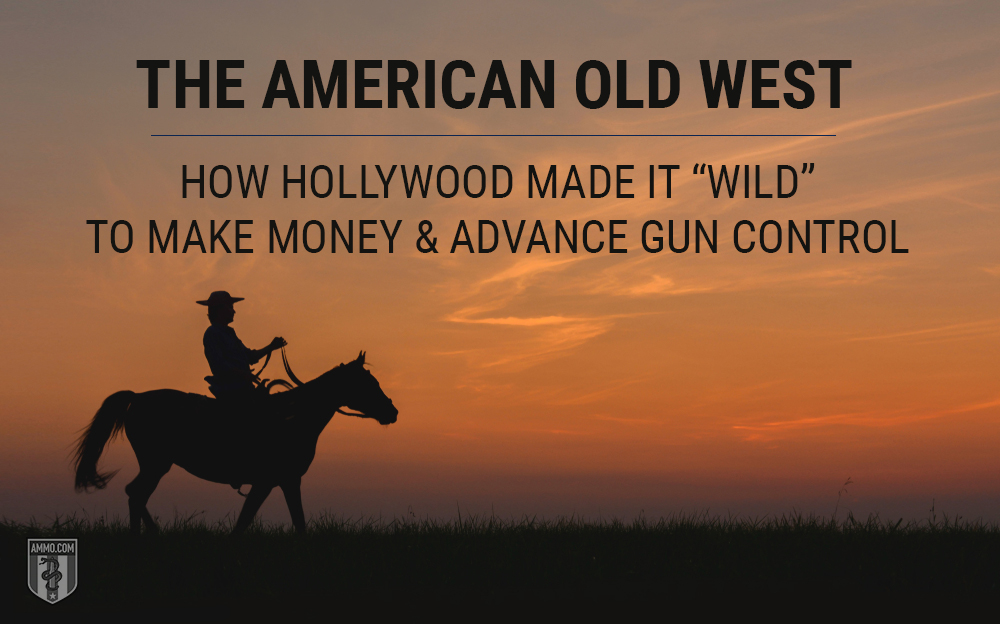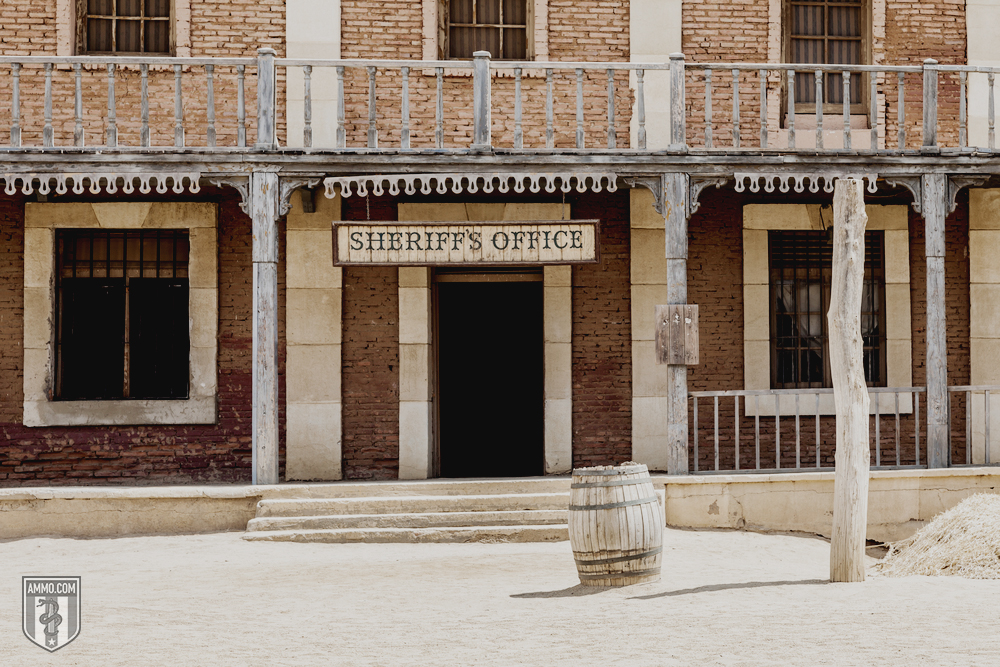
Hollywood has a clever way of distorting our perspective on history, and a great example of this is Western film – a movie genre we’ve all come to love. Cattle rustlers, guns blazing, outlaws running loose, and vigilantes dishing out vengeance indiscriminately. These scenes have become more synonymous with the American Frontier than Winchester and their “Cartridge That Won the West.” But these fictional tales have produced more than entertainment for over a century; they’ve also contributed to an ongoing, subtle push for gun control, all while making Hollywood millions.
Revisionist history books tell us that the “Wild West” was an anarchic period of time that was not conducive to human prosperity. Images of a Hobbesian nightmare – a life that is brutish and short – are ingrained in our consciousness thanks to decades of public schooling and violent images on the silver screen which are light on actual history and heavy on creative license.
However, individuals who believe in liberty and developing their critical thinking faculties should be skeptical of most mainstream narratives regarding history, especially American history. After all, these narratives by and large have been created by Hollywood, a legacy institution that has historically advanced politically correct content with the support of Washington in order to perpetuate the cultural status quo.
When the curtain of political correctness that’s been draped over this particular period of history is pulled back, we see a much more nuanced picture of the American Frontier. In fact, research by historians such as Peter J. Hill, Richard Shenkman, Roger D. McGrath, Terry Anderson, and W. Eugene Holland shows that this period was rather indicative of a “not so wild, Wild West.”
For the purposes of this article, the Wild West will now be referred to as the Old West. This is by no means a pedantic distinction, but rather an acknowledgment of the fact that this time period was not “wild” by any stretch of the imagination when compared to other chaotic periods in human history. Indeed, the Old West had its fair share of challenges for American settlers. But as we’ll see below, crafty settlers found ways through ingenuity and mutual cooperation – all done with very limited state interference – to create a stable order for generations to come.
So let us delve into the “not so wild, Wild West.”
 The Old West was not a paradise by any stretch of the imagination. There existed conflict between groups, such as American settlers and Native American tribes, once they came in contact in the Great Plains and other parts of the frontier. This was natural due to the cultural differences that existed between these groups and the lack of defined property rights in those regions.
The Old West was not a paradise by any stretch of the imagination. There existed conflict between groups, such as American settlers and Native American tribes, once they came in contact in the Great Plains and other parts of the frontier. This was natural due to the cultural differences that existed between these groups and the lack of defined property rights in those regions.
However, in more settled towns on the frontier, there was not as much violence as the Hollywood flicks would like you to believe. One of the most important texts disrupting this depiction of the Old West was W. Eugene Hollon’s Frontier Violence: Another Look. Hollon argued that “the Western frontier was a far more civilized, more peaceful, and safer place than American society is today.” Additionally, historian Richard Shenkman makes the case that the popular depictions of the Old West belong more in a movie script rather than a real-life historical account.
Shenkman noted:
“Many more people have died in Hollywood Westerns than ever died on the real Frontier.”
Dodge City has become a landmark for Western movies, but its portrayal is more fiction than reality. Shenkman also dismantled the Dodge City myth:
“In the real Dodge City, for example, there were just five killings in 1878, the most homicidal year in the little town’s Frontier history: scarcely enough to sustain a typical two-hour movie.”
Larry Schweikart of the University of Dayton also pointed out that the infamous bank robberies that captivate movie audiences were not very frequent. His research uncovered that there were fewer than a dozen bank robberies in the frontier West from 1859 to 1900. In essence, Schweikart argues that there are “more bank robberies in modern-day Dayton, Ohio, in a year than there were in the entire Old West in a decade, perhaps in the entire frontier period.”
Arguably, the strongest and most concise text reclaiming the true history of the American West, Terry L. Anderson and Peter J Hill’s The Not So Wild, Wild West has forever changed the way Americans view the American Frontier. Anderson and Hill’s research found that the establishment of property rights was key in taming the American West. Indeed, this process took time, but it was well worth it. The Old West was a demonstration of human ingenuity and long-term planning that eschewed the quick fixes of modern-day politics.
In mining-related matters, American settlers found ways to peacefully adjudicate disputes, which Anderson and Hill noted:
“In the absence of formal government, miners in a particular location would gather and hammer out rules for peacefully establishing claims and resolving disputes over them.”
The authors went as far as to say that the “rules that govern western mining and mineral rights evolved literally from the ground up.” These developments in the Old West were no trivial occurrences, they set the stage for even bigger developments that the authors note below:
“Not only did the miners pave the way for mineral rights throughout the West, but they laid the foundation for western water law.”
This manner of peacefully settling property rights disputes carried over into other sectors, such as ranching and farming. There were obviously various roadblocks at the start, but settlers still found free-market ways of getting around these obstacles. In sum, Anderson and Hill’s findings demonstrated that the Old West was not so chaotic:
“In the mining camps and on the open range, the six-gun seldom served as the arbiter of disputes. Instead, miners established rules in camp meetings, and cattlemen used their associations to carve up the range, round up their cattle, and enforce brand registration. Though not all attempts at dispute resolution succeeded, institutional entrepreneurs found ways to define and enforce property rights that created, rather than destroyed, wealth. In short, the West was really not so wild.”
Such scenes of mutual cooperation on a voluntary basis are almost unheard of in today’s political climate. For many busybody politicians, all meaningful economic activity must be conducted under government supervision. As a matter of fact, had any of the problems in the Old West surfaced in present times, there would be instant calls for the government to step in and try to fix things. Once the unintended consequences of these interventions set in, the same calls for more government “help” would come back to life.
Thankfully, our forebears were much wiser in the late 19th century. By maintaining a relatively hands-off approach, the federal government allowed the unsettled American Frontier to naturally tame itself through the voluntary cooperation of settlers.
Continue reading The American Old West: How Hollywood Made It “Wild” to Make Money & Advance Gun Control at Ammo.com.
